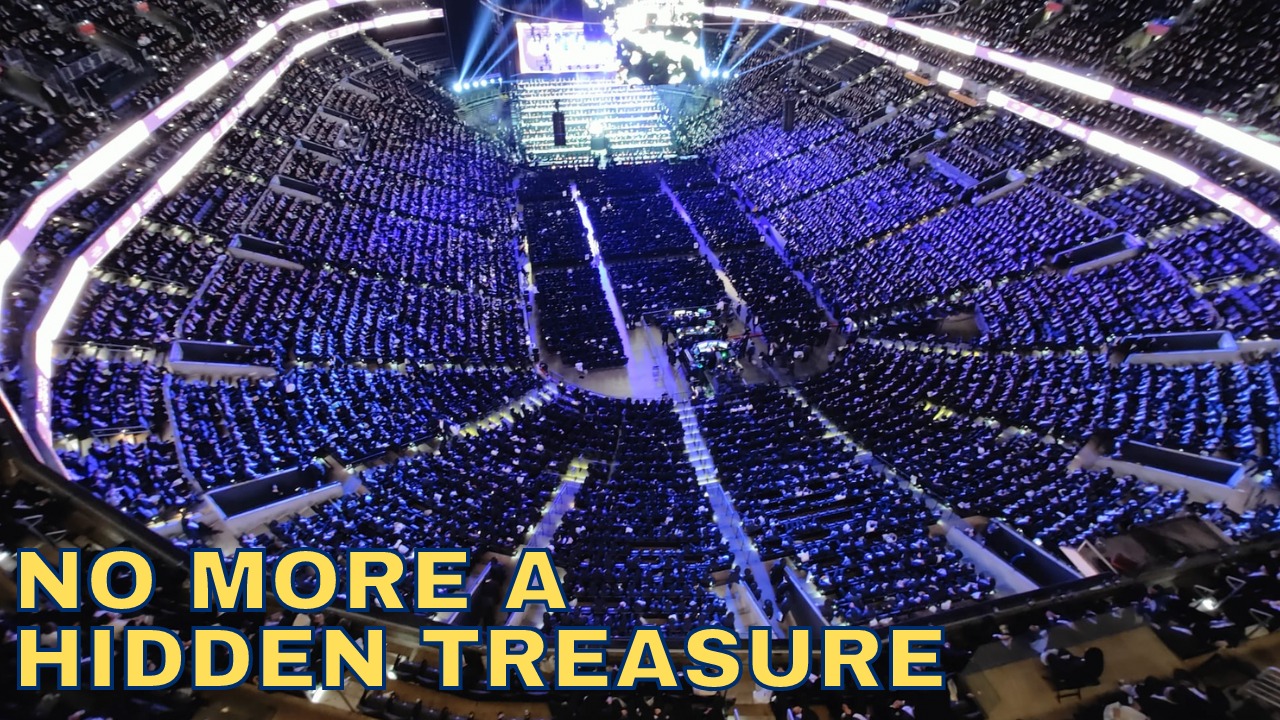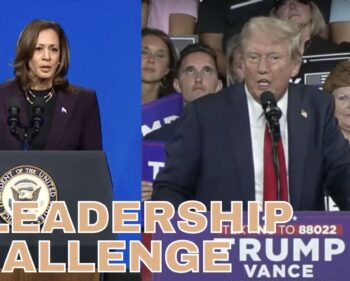NO MORE A HIDDEN TREASURE

In March 1924, almost 100 years ago, three exceptional rabbinic leaders crossed the Atlantic to launch a mission that would last eight months, and would traverse some of North America’s major Jewish population centers. Their mission: to raise funds for and promote the cause of the countless Torah institutions in Eretz Yisrael and Europe, all of which were struggling to survive in the wake of the First World War.
The United States was in the midst of an economic boom. The 1920s were a time of significant economic growth and widespread prosperity – and many European Jewish immigrants to the U.S. with roots in Russia, Lithuania, and Poland, had become extremely affluent.
The idea was for the delegation to return to Eretz Yisrael and Europe with the sum of one million dollars (equivalent to $18 million today), which would be used to revive the flagging fortunes of dozens of yeshivas that were in danger of imminent financial collapse and closure.
The delegation of rabbis was crème-de-la-crème. First among equals was the Ashkenazi chief rabbi of Palestine, Rabbi Avraham Yitzhak Hacohen Kook (1865-1935), a superlative scholar and mystic, whose love of the Land of Israel had become the central theme of his existence. Joining him were two other rabbinic giants: Rabbi Moshe Mordechai Epstein (1866-1933), head of the esteemed Slabodka Yeshiva, and Rabbi Avraham Dov-Ber Kahana-Shapiro (1870-1943), venerated rabbi of Kovno and president of the Agudat Ha-Rabbanim of Lithuania.
The rabbis were greeted on the New York dock by thousands of well-wishers. Rabbi Kook had never previously visited America, and a wave of excitement rippled through the crowds as he disembarked from the ship.
In a display of honor typically reserved for visiting statesmen, the three rabbis soon found themselves leading a grand motorcade toward New York’s City Hall. There, Mayor John F. Hylan, alongside a host of other distinguished public figures, officially welcomed them to America in an unprecedented ceremony.
A reporter, struck by the spectacle, noted that this might have been the most significant recognition bestowed upon any rabbi since Rabbi Menasseh ben Israel’s meeting with Oliver Cromwell in London in 1655. The ceremony reached its climax when Mayor Hylan, in his spirited address, granted the esteemed rabbis symbolic “Freedom of the City.”
And so it was wherever they went – thousands of Jews came to see the rabbis in Chicago, Detroit, Philadelphia and Montreal, and various other cities.
In April 1924, Rabbi Kook met President Calvin Coolidge at the White House, and thanked him for the U.S. government’s support of the Balfour Declaration, emphasizing that the Jews’ return to the Holy Land would bring benefits to all of mankind, not just for the Jewish people. He also highlighted the U.S.’s embodiment of liberty and freedom, as inscribed on the Liberty Bell, and voiced his hope for the nation’s continued commitment to these principles. Rabbi Aaron Teitelbaum, director of the Central Relief Committee, translated and delivered the Hebrew speech in English.
Despite the excitement that trailed the distinguished rabbinic delegation at every turn, the task of raising funds proved far more formidable than anyone had expected, and the results were somewhat disheartening.
Wealthy Jewish benefactors, clearly more interested in pursuing the American dream than in supporting yeshivas, exhibited a lukewarm response across the board, seemingly distanced from the way of life they’d left behind in Europe and that they were now being asked to financially support.
Additionally, the younger generation remained largely disengaged, untouched by the rabbis’ visit – and besides for brief interactions during sparse visits to the handful of Jewish schools then in operation, the rabbis had few opportunities to engage with the emerging generation of American Jews.
Despite their relentless efforts spanning the unexpectedly extended eight-month campaign – the original plan had been for a three-month visit – the distinguished rabbis’ endeavors culminated in a sobering bottom line that fell drastically short of the anticipated financial goal. Having journeyed tirelessly across America and Canada, and having invested their collective spirit and energy into this critical mission, their efforts yielded a mere $300,000 – a sum considerably lower than the organizers’ initial vision.
As the rabbis prepared to bid farewell to the United States, the local Jewish media eagerly sought their impressions. In an exclusive interview with the widely read Morgen Journal, Rabbi Kook adopted a constructive stance amidst the underwhelming financial outcome. He characterized American Jewry as a “hidden treasure,” a sentiment laced with a caveat – the fulfillment of this latent potential hinged on the provision of a robust Jewish education for the younger generation going forward.
Given this foundation, Rabbi Kook foresaw American Jewry not only surpassing their diaspora counterparts but also establishing itself as an exemplary force. Echoing ancient times, he projected a world with two thriving Jewish epicenters: Israel and America.
My thoughts drifted to the failed 1924 mission, and especially Rabbi Kook’s final musings, as I found myself amidst the remarkable Adirei Hatorah gathering this past Sunday in Philadelphia. Established in 2021, Adirei Hatorah – which translates as “warriors of Torah” – was designed to provide meaningful financial support to those dedicating their lives to full-time Torah study at Lakewood’s Beth Medrash Govoha (BMG) Kollel.
This bustling hub of Jewish learning serves as a spiritual and intellectual home to thousands of young men intent on grounding their marital lives in the sacred soil of Torah study. While some remain indefinitely, others spread out across the United States and beyond as rabbis and rabbinic teachers. A notable contingent also goes on to succeed in various professional fields or business endeavors, and it is they who now feel a sense of obligation to extend their support to the current generation of BMG Torah learners.
Held in the vast Wells Fargo Center – known to basketball fans as the home of the Philadelphia 76ers – the Adirei Hatorah event was nothing short of spectacular. With the organizers’ fine eye for detail, the evening was orchestrated and perfectly calibrated to pay homage to those at the BMG Kollel who have devoted their lives to Torah study.
There were no less than 25,000 participants from Jewish communities scattered along the East Coast, and the air crackled with the energy of electrifying music. Yet, it was the powerful chorus of the crowd that truly moved the masses. In some instances, the instruments and lead singers would fall silent, allowing the magnificent harmony of 25,000 voices to wash over the expansive arena, creating an atmosphere of unity and reverence.
Unlike the gatherings of 1924, the true champions of this event were not the esteemed rabbis seated at the dais – and there were an impressive 800 of them, including two revered ninety-three-year-old luminaries from Israel: Rabbi Dov Landau, head of the Slabodka yeshiva in Bnei Brak; and Rabbi Meir Tzvi Bergman, distinguished son-in-law of the late Rabbi Elazar Menachem Man Shach (1899-2001).
No, the unmistakable heroes of this gathering were undeniably the many thousands of wide-eyed, eager yeshiva students, all of them in their teens and early twenties. Their palpable pride as dedicated Torah students shone brightly, radiating a contagious aura of enthusiasm and commitment that was unmistakable to all of those who were present.
Also contrary to the abortive 1924 campaign were the other heroes of Adirei Hatorah: the philanthropists who have contributed and continue to contribute many tens of millions of dollars a year between them – in a public demonstration of just how much they value Torah study, despite having personally opted for a life of commerce.
What a difference a century makes. Unfettered by the hang-ups that traumatized Jewish immigrant pioneers eager to shed Torah ideals, this new generation understands to their very core that the future of American Jewish life is contingent on robust Jewish education and unconditional support for Torah study. American Jews are no longer a “hidden treasure”; Adirei Hatorah proves that America is indeed the second epicenter of Jewish life next to Israel, just as Babylon was in ancient times.
The words of the prophet Jeremiah (Jer. 15:5) aptly describe last Sunday: כִּי לֹא אַלְמָן יִשְׂרָאֵל וִיהוּדָה – “For Israel and Judah are not widowed.” Even in moments where God’s presence seems to have dissipated amongst His people, and when the continuation of Jewish life appears as nothing more than a fanciful illusion, the robust flames of dedicated Torah life can still be salvaged from the ashes of despair.
This past Sunday, my mind could not help but wonder what Rabbi Kook, Rabbi Epstein, and Rabbi Kahana-Shapira might have made of the sight unfolding before my eyes in Philadelphia. Here was a vibrant assembly of 25,000 American Jews, embodying the rich and timeless values of the communities and institutions these rabbis led in Europe and Eretz Yisrael, in stark contrast to the somewhat fragile, shallow Jewish life they had encountered in the previous months, a life that seemed to fate American Jewry into inevitable oblivion.
The vivid spectacle in Philadelphia of so many people, all firmly anchored in Torah values, serves as a powerful testament to the indefatigable spirit and resilience of a hallowed Jewish life, even when faced with the harshest of trials.
The dedication of these young Torah scholars stands as an illuminating beacon of hope for the future of American Jewry, bridging the venerable traditions of the past with the boundless potential of tomorrow. It underscores the profound wisdom in Jeremiah’s words: Israel and Judah were never truly widowed, for the spiritual lineage and commitment to Torah live on.
A century ago, that possibility seemed not to be there, and as the three rabbis sailed home, they must have thought to themselves – Judaism in America is doomed. Truthfully, even a generation or two ago, no one could have predicted such success.
But here we are, in 2023 – and the impossible vision of a thriving, deeply rooted Torah community in America has not merely come to pass; it has flourished beyond anyone’s wildest dreams. I, for one, was moved beyond words in Philadelphia, and even to tears. It is undoubtedly an experience I shall never forget, and will cherish for as long as I live.

